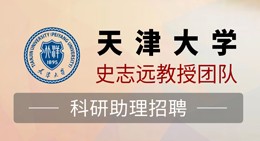乙烯是一种与植物器官自然衰老和脱落有关的内源性植物激素。植物生长调节剂乙烯利的主要成分 2-氯乙基膦酸降解释放乙烯有助于酸樱桃果实的机械化收获。然而,尚未探索摘除未成熟酸樱桃果实的方法,但最近的结转库存、廉价的酸樱桃进口产品以及入侵昆虫斑点翅果蝇的爆发,共同导致作物价值低于生产成本,因此需要作物消除。我们评估了未处理、乙烯利处理和 AVG 处理的“蒙莫朗西”酸樱桃花和果实在几个物候阶段的乙烯排放和脱落率。未经处理的花朵的自然乙烯排放量 < 1 μL kg-1 h -1在盛开 (FB) 和花瓣落下 (PF) 之间有一个小峰。AVG 减少但没有消除乙烯生物合成。乙烯排放与乙烯利浓度呈线性相关,并在施用后的约 5 天内保持升高。根据年份、时间和速率,在 FB 应用乙烯利会产生最高的乙烯产量(10–100 μL kg -1 h -1 )。在脱壳 (SS) 阶段的应用导致乙烯产量非常低(~ 1 μL kg -1 h -1)。脱落率不受 AVG 的影响,表明内源乙烯生物合成的自然水平不会限制坐果。然而,随着乙烯利剂量的增加,脱落率增加,并且与晚期物候阶段相比,在 FB 时间也最高;然而,在最高乙烯利浓度(800 ppm)下,尽管 SS 的乙烯产量相对较低,但在所有发育阶段都发生了约 90% 的脱落。因此,“Montmorency”酸樱桃的乙烯排放不能用于预测脱落。由于温度会影响乙烯的产生,并且在施用乙烯利后最高环境温度会发生变化,因此我们在多个温度(10、21、30 和 35°C)下培育乙烯利处理过的花和未成熟的果实。乙烯排放再次,a ) 乙烯在温度范围内的排放在乙烯利速率或物候阶段相似(在所有情况下约为 76 kJ mol -1 )。数据表明乙烯利可以消除酸樱桃作物,但环境温度、物候阶段和速率相互作用以调节功效。
 "点击查看英文标题和摘要"
"点击查看英文标题和摘要"
Ethylene emission and abscission of immature ‘Montmorency’ sour cherry fruitlets vary with ethephon concentration, phenology stage and ambient temperatures following application
Ethylene is an endogenous plant hormone associated with natural senescence and abscission of plant organs. Ethylene release from the degradation of 2-chloroethylphosphonic acid, the a.i. of the plant growth regulator ethephon, facilitates the mechanized harvest of sour cherry fruit. Methods to abscise immature sour cherry fruit, however, have not been explored but recent carryover inventories, inexpensive sour cherry imported products, and outbreaks of the invasive insect, spotted wing drosophila, have combined to reduce crop value below the cost of production thereby necessitating crop elimination. We assessed the ethylene emission and abscission rates of untreated, ethephon-treated and AVG-treated ‘Montmorency’ sour cherry flowers and fruitlets at several phenology stages. The natural ethylene emission from untreated flowers was < 1 μL kg−1 h−1 with a small peak between full bloom (FB) and petal fall (PF). AVG reduced, but did not eliminate, ethylene biosynthesis. Ethylene emission was linearly related to ethephon concentration and remained elevated for ~ 5 days following application. Ethephon application at FB induced the highest ethylene production (10–100 μL kg−1 h−1) depending on year, timing, and rate. Application at the shuck split (SS) stage resulted in very low ethylene production (~ 1 μL kg−1 h−1). Abscission rates were unaffected by AVG suggesting that natural levels of endogenous ethylene biosynthesis do not limit fruit set. Abscission rates increased, however, with increasing ethephon dose and were also highest at FB timing compared to advanced phenology stages; however, at the highest ethephon concentration (800 ppm), ~ 90% abscission occurred for all developmental stages, despite the comparatively low ethylene production at SS. Thus, ethylene emission of ‘Montmorency’ sour cherry cannot be used to predict abscission. Because temperature affects ethylene production and the maximum ambient temperatures were variable following ethephon applications, we incubated ethephon-treated flowers and immature fruitlets over several temperatures (10, 21, 30 and 35 °C). Ethylene emission was, again, highest at full bloom and increased with ethephon dose and temperature, but tthe activation energy (Ea) for ethylene emission over the temperature range was similar among ethephon rates or phenology stages (~ 76 kJ mol−1 in all cases). Together the data suggest that ethephon can eliminate sour cherry crops, but ambient temperature, phenology stage and rate interact to regulate efficacy.

















































 京公网安备 11010802027423号
京公网安备 11010802027423号